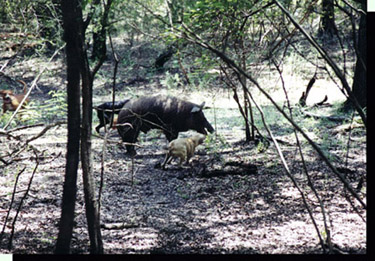


Some residents, however, blame property that's being developed nearby for sending the hogs towards Sun City Center from the woods close to the neighborhood. The hogs are likely drawn to the area due to the mango trees, which provide food, as well as the nearby lake, providing water, WFLA-TV reports. For more information on Singers, visit hogs are terrorizing the Florida neighborhood of Sun City Center, digging up lawns and acting aggressively towards residents. If you have a Singer, but no longer want it, contact FWC’s Exotic Pet Amnesty Program by email or or by calling 88.įor other questions, call the Captive Wildlife Office in Tallahassee at 85.

If you own one as a personal pet, you’ll need a no-cost permit from the Florida Fish and Wildlife Conservation Commission. The change, which aligns with federal rules, means that the few who have a Singer for exhibition or sale, such as a zoo, will need to acquire a license. > FWC’s Captive Wildlife Office says Singers will be classified as Class III exotic wildlife. Their chorus, she adds, “is beautiful and melodic.” ¦

“Any group of canids may all howl at the same time, but only the Singers coordinate their calls, harmonizing with each other and adjusting up and down scale, then abruptly stopping almost together,” she says. Koler-Matznick, as well as in captivity when they want attention. Their howl is a form of communication heard especially at dawn and dusk, says Ms. Because they are concentrated in one area, this population is especially vulnerable to environmental hazards such as logging or mining, she adds. There are “possibly 2,000-3,000 wild Singers” living there “above 4,000 feet throughout the mountain ranges, above where people generally live,” Ms. There is little information about these dogs in the wild, though the society is starting a preliminary field study in the Papua New Guinea mountains. “300 may actually be a bit high,” writes Janice Koler-Matznick, president of the conservation society. They have sometimes been cross-bred with other dogs. The New Guinea Singing Dog Conservation Society, a nonprofit started in 1997 that aims to preserve the Singer population, provides a “ball-park guess” that there are 300 captive Singers worldwide including in zoos, sanctuaries, shelters and with private parties. But they are wonderful, sweet dogs with their owners.” “You don’t take them to dog parks, and you don’t take them to PetSmart. You have to give them the respect they’re due… “I call them ‘cat dogs.’ They are extremely smart. “They dig like crazy, and they can climb fences and trees,” she adds. “You don’t ‘own’ a New Guinea Singing Dog, and they’re not a pet,” says Gayle Person of Melbourne, who has two female Singers names Nora and Asha and a male named Motu. They are typically shy, but not aggressive, toward people and affectionate once they get to know you. With excellent jumping and digging capabilities, Singers can easily escape without proper precautions such as fencing - and they probably would not come back. “At this point they’re just so fearful, I don’t want to traumatize them,” she says. If so, the pair will live out their lives at her house. Deppen thinks they might be too shy for that role. Although they might one day be “ambassadors,” taken to events to help educate people about Singers, Ms. Hunter is mostly blind in one eye and has lost some sight in the other, and Clara is being treated for heartworms. “They’ll sing on the way to the vet’s office.” Deppen says.Ĭlara and Hunter sometimes “sing” when feeling stressed, she adds. “These animals are very catlike in that they’re independent and they willingly use the litterbox,” Ms. The female, 7-year-old Clara, and male, 5-year-old Hunter, are litterbox trained. The sanctuary’s executive director, Deanna Deppen, is caring for them at her home in Naples. Shy Wolf Sanctuary in Naples rescued two Singers from a shelter in Harris County, Texas, in November. People who just thought they were cool pets sometimes give them up to shelters. As a species they are similar but distinct from Australian dingoes, and also share characteristics with gray wolves and coyotes.Īlthough they can make wonderful pets for some, Singer advocates say, their high “prey drive” - for instance, a tendency to kill small animals such as birds or unfamiliar cats - and sense of independence makes them too hard to handle for casual owners. COURTESY PHOTOSingers - canis lupus dingo or canis lupus hallstromi - on average weigh 25 pounds. The howl of the dog is a form of communication, heard especially at dawn and dusk.


 0 kommentar(er)
0 kommentar(er)
